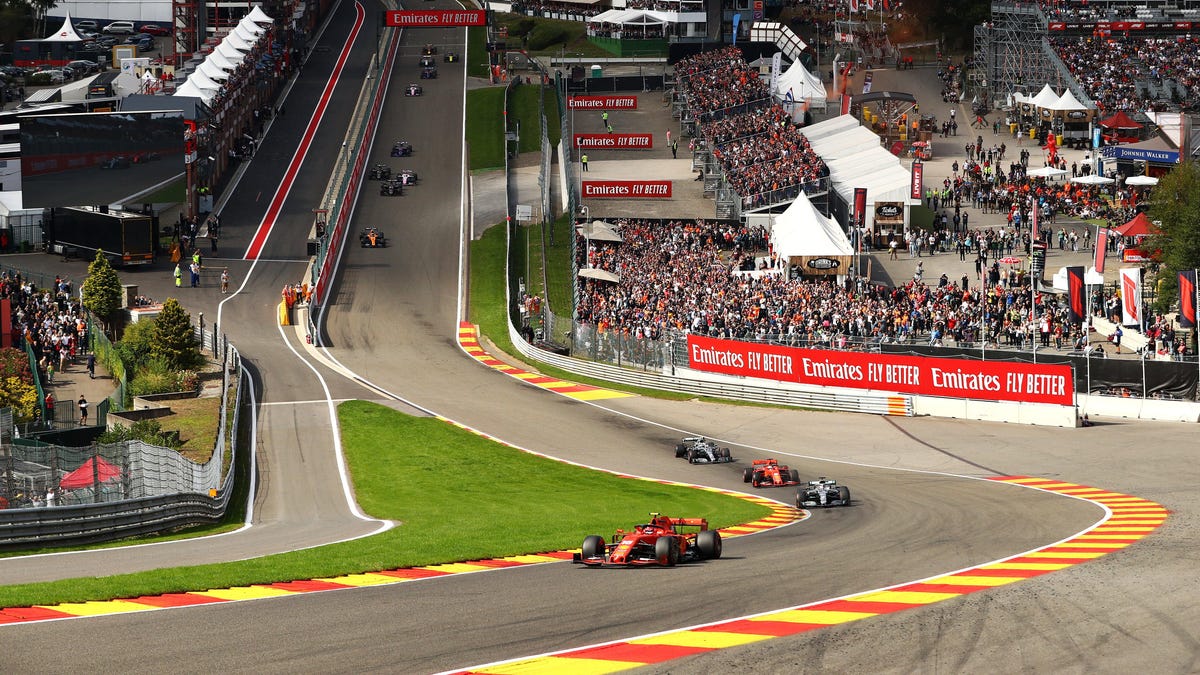
Stuart shows how physics impacts the car: basically, as the car dips into Eau Rouge, it gets heavier; as it lifts, it gets lighter. Drastically changing forces can result in a loss of control, and the positioning of the barriers at the track often see cars bounce back into oncoming traffic. Factor in Spa’s unpredictable weather, and you’ve got a recipe for disaster.
The main concern here then ties into both the corner itself and the construction of the car. The problem is the secondary impact, or the one that happens after the main crash has taken place. F1 cars are designed with single accidents in mind, so the car can very effectively disintegrate and deform in a predictable manner that also protects the driver behind the wheel. By the second impact, though, all those life-saving structures are gone. The car isn’t designed for that second hit. That’s often where we see injuries.
As Chain Bear notes, though, the track itself is fine — it’s the safety measures around it that are the problem. We can realistically keep Eau Rouge and Raidillon just as it is, but with changes to the narrow runoff sections.
G/O Media may get a commission
But to go along with Chain Bear’s video, I want to offer a little historical perspective as well. I just wrapped up The Science of Safety by David Tremayne, a book that covers the evolution of safety in Formula One — and Spa does feature frequently in discussions about safety.
Eau Rouge was, in large part, one of the reasons why the F1 circus experimented with other Belgian race tracks, like Zolder or Nivelles-Baulers. Spa was a track that required a serious amount of skill, which is why drivers liked it — but it also resulted in several serious injuries and deaths. After Ayrton Senna’s death at Imola, F1 popped some chicanes into the track just before Eau Rouge, but it wasn’t a hit. The track went back to normal, with a very slight modification coming for 2002. People have been incredibly touchy about Spa, and in particular, Eau Rouge. And changes to it have been largely ineffective: a middling barrier after Jackie Stewart’s 1966 crash, an inelegant chicane, a little bit of gravel. Nothing has really made an impact.
Advertisement
Something, though, has to change. In an era of carefully mitigated risk, Eau Rouge continues to offer not so much a challenge as a hazard. It’s the only track in the modern era that sends a chill down your spine, and not in a good way. It’s time to prize F1’s other legacy — the ever-evolving push for safety around the iconic tracks — and not the staid nature of danger.
For GREAT deals on a used cars check out AutoLand USA TODAY!